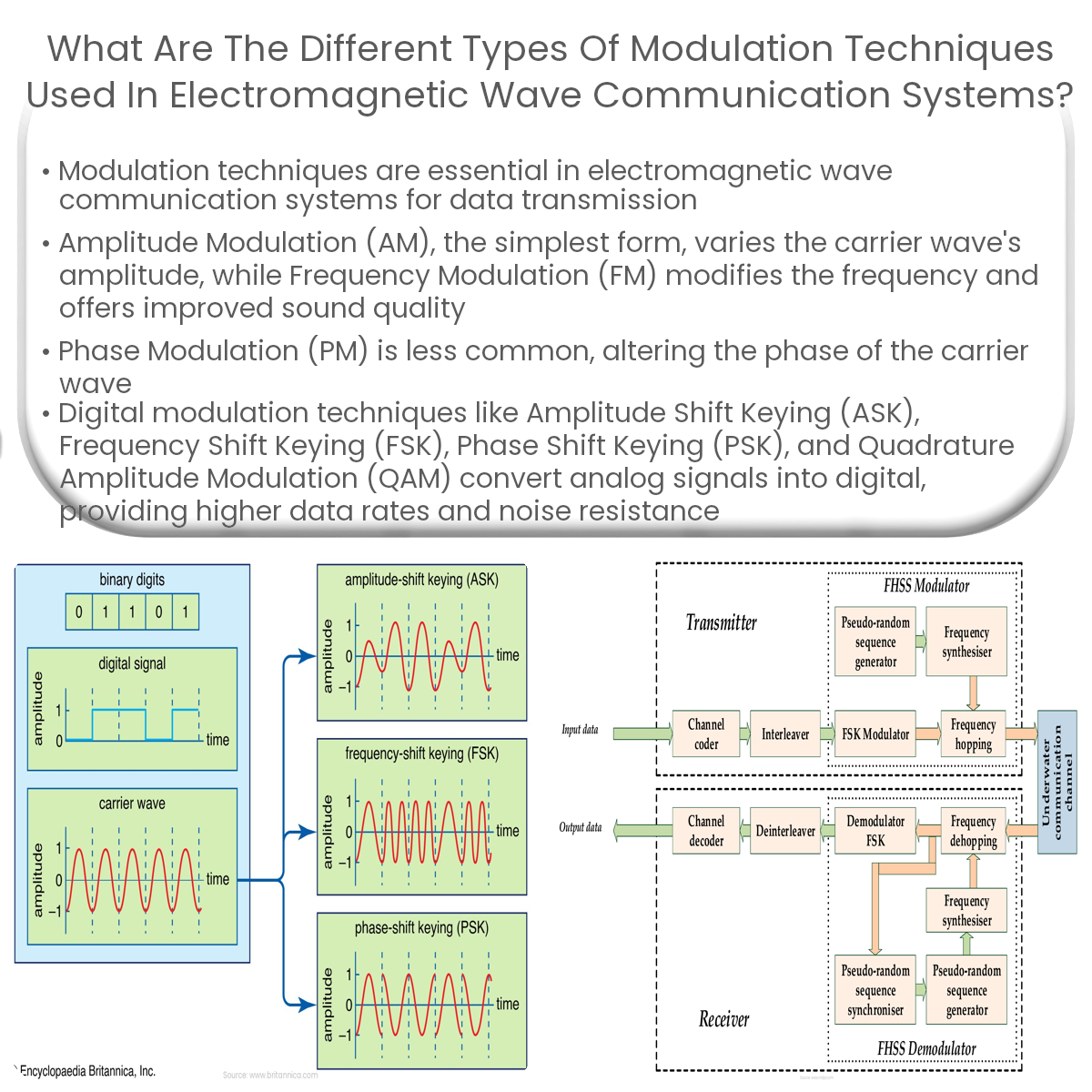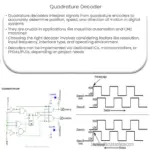Different modulation techniques include Amplitude Modulation (AM), Frequency Modulation (FM), Phase Modulation (PM), Amplitude Shift Keying (ASK), Frequency Shift Keying (FSK), Phase Shift Keying (PSK), and Quadrature Amplitude Modulation (QAM).
Introduction to Modulation Techniques
Electromagnetic wave communication systems are integral to modern technology, enabling the transmission and reception of data in various formats. Modulation techniques play a crucial role in these systems, as they facilitate the encoding of information onto carrier waves. In this article, we explore the different types of modulation techniques employed in electromagnetic wave communication systems.
Amplitude Modulation (AM)
Amplitude modulation (AM) is a technique in which the amplitude of the carrier wave is altered in proportion to the instantaneous value of the message signal. This results in a waveform that retains the same frequency but exhibits varying amplitude. AM is commonly used in radio broadcasting and is the simplest form of modulation.
Frequency Modulation (FM)
Frequency modulation (FM) involves modifying the frequency of the carrier wave in accordance with the instantaneous value of the message signal. This type of modulation is less susceptible to noise than AM and offers improved sound quality. FM is widely used in radio broadcasting, as well as in wireless communication systems such as mobile phones.
Phase Modulation (PM)
Phase modulation (PM) entails varying the phase of the carrier wave based on the message signal’s instantaneous value. PM is less common than AM and FM but is employed in certain applications, including digital communication systems and satellite communication.
Digital Modulation Techniques
Digital modulation techniques convert analog signals into digital form, allowing for more efficient data transmission. Some of the most common digital modulation methods include:
These techniques involve changing specific aspects of the carrier wave, such as amplitude, frequency, or phase, based on digital input. As a result, they are more resistant to noise and provide higher data rates than analog modulation methods.
Conclusion
In summary, various modulation techniques are employed in electromagnetic wave communication systems to transmit information efficiently and effectively. While analog modulation methods like AM, FM, and PM remain prevalent, digital modulation techniques such as ASK, FSK, PSK, and QAM are increasingly popular due to their noise resistance and higher data rate capabilities.




